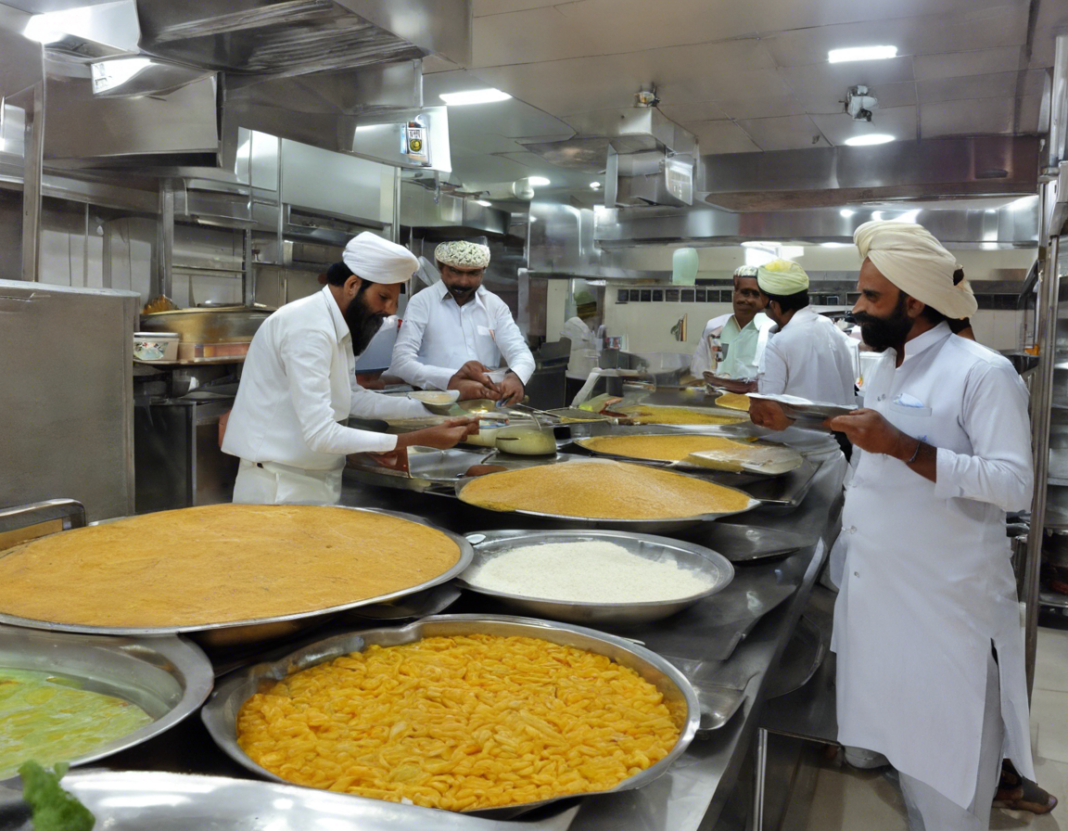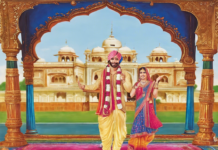Introduction
Rajasthan, the land of kings, is not only rich in historical heritage but is also renowned for its vibrant culinary landscape. The state’s food culture is as diverse as its landscapes, from the arid deserts of Jaisalmer to the lush hills of Mount Abu. Rajasthan’s cuisine is a delightful blend of royal culinary traditions, simple rustic dishes, and rich flavors that are sure to tantalize your taste buds. In this article, we will take you on a gastronomic journey through the food department of Rajasthan, exploring its unique dishes, traditional cooking methods, and the significance of food in Rajasthani culture.
Rajasthani Culinary Delights
Rajasthani cuisine is a celebration of flavors and spices that are used in a harmonious way to create mouth-watering dishes. One of the most iconic dishes of Rajasthan is Dal Baati Churma, a hearty meal consisting of baked dough balls (baati) served with spicy lentil curry (dal) and a sweet powdered cereal mixture (churma). The baatis are traditionally cooked over charcoal or cow dung cakes, imparting a smoky flavor to the dish.
Laal Maas is another famous dish that originated in the royal kitchens of Rajasthan. This fiery hot lamb curry gets its vibrant red color from the use of naturally available ingredients like mathania red chilies. The dish is a favorite among meat lovers and is best enjoyed with traditional Indian bread like roti or rice.
For those with a sweet tooth, Rajasthan offers a plethora of desserts that are sure to satisfy your cravings. Ghevar, a delicate honeycomb-like dessert made of flour, sugar, and ghee, is a must-try during the festival of Teej. Malpua, deep-fried pancakes dunked in sugar syrup, and Moong Dal Halwa, a rich dessert made from mung beans, are other popular sweet treats that are enjoyed across the state.
Traditional Cooking Methods
Rajasthani cuisine is characterized by its traditional cooking methods that have been passed down through generations. The use of clay pots, brass utensils, and wood fire stoves imparts a unique flavor to the dishes. Kadhai, a deep and thick-bottomed cooking vessel, is commonly used to prepare curries and stir-fries. Hand grinding of spices using a mortar and pestle is still prevalent in many households, ensuring the authentic taste of Rajasthani cuisine.
Rajasthani Street Food
Street food is an integral part of Rajasthan’s culinary scene, offering a wide variety of quick bites that are flavorful and affordable. Pyaz Kachori, deep-fried pastries stuffed with a spicy onion filling, and Mirchi Bada, green chilies coated in a gram flour batter and fried to golden perfection, are popular snacks enjoyed by locals and tourists alike. Mawa Kachori, a sweet version of the savory kachori filled with mawa (reduced milk) and dry fruits, is a sinful indulgence that is worth every calorie.
Significance of Food in Rajasthani Culture
Food holds a sacred place in Rajasthani culture and is deeply intertwined with traditions and rituals. The elaborate thali meals served in households and restaurants reflect the warm hospitality that the state is known for. Rajasthan is also famous for its grand feasts and festivals like Teej, Diwali, and Holi, where a wide array of dishes are prepared to celebrate the occasion.
Rajasthani Cuisine Beyond Borders
The food department of Rajasthan has transcended geographical boundaries and has gained popularity across the globe. Rajasthani restaurants in metropolitan cities like Delhi, Mumbai, and Bangalore serve authentic dishes that cater to the palate of food enthusiasts. Internationally, Rajasthani cuisine has found its place on the menus of Indian restaurants in countries like the United States, United Kingdom, and Australia, captivating diners with its bold flavors and rich heritage.
Health Benefits of Rajasthani Cuisine
Rajasthani cuisine, with its emphasis on using whole grains, legumes, and vegetables, offers a balanced and nutritious diet that is beneficial for health. Dishes like Gatta Curry made from chickpea flour, Ker Sangri cooked with beans and berries, and Bajra Roti made from pearl millet are not only delicious but also nutrient dense. The use of spices like turmeric, cumin, and coriander not only enhances the flavor of the dishes but also provides medicinal benefits.
FAQs
- What are some common ingredients used in Rajasthani cuisine?
-
Rajasthani cuisine makes use of staples like wheat, millet, gram flour, lentils, chilies, and spices such as cumin, coriander, and fenugreek.
-
Is Rajasthani food too spicy for someone with a mild palate?
-
While Rajasthani cuisine is known for its spicy dishes, there are also mild flavors that can be enjoyed by those who prefer a less spicy palate.
-
Are there vegetarian options available in Rajasthani cuisine?
-
Yes, Rajasthan has a rich tradition of vegetarian cooking, with dishes like Dal Baati Churma, Gatta Curry, and Ker Sangri being popular choices.
-
What is the best time to visit Rajasthan for food enthusiasts?
-
The winter months from November to February are considered ideal for visiting Rajasthan as the weather is pleasant, and festivals like the Pushkar Camel Fair offer a culinary extravaganza.
-
Can I find Rajasthani food outside of Rajasthan?
- Yes, Rajasthani cuisine has gained popularity across India and internationally, with many restaurants offering authentic dishes for food lovers to enjoy.
Conclusion
Exploring the food department in Rajasthan is not just a culinary journey but a cultural experience that unveils the richness and diversity of the state’s gastronomy. From royal dishes served in palaces to humble street food enjoyed in bustling markets, Rajasthan’s cuisine is a melting pot of flavors, aromas, and textures that are sure to leave a lasting impression on your taste buds. So, the next time you visit Rajasthan, don’t forget to savor the culinary delights that this land of kings has to offer.












